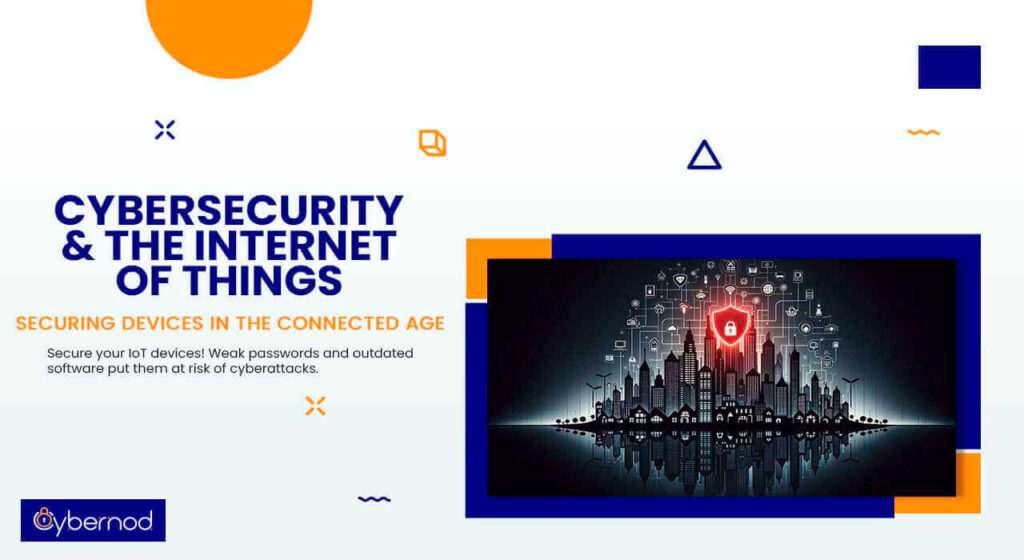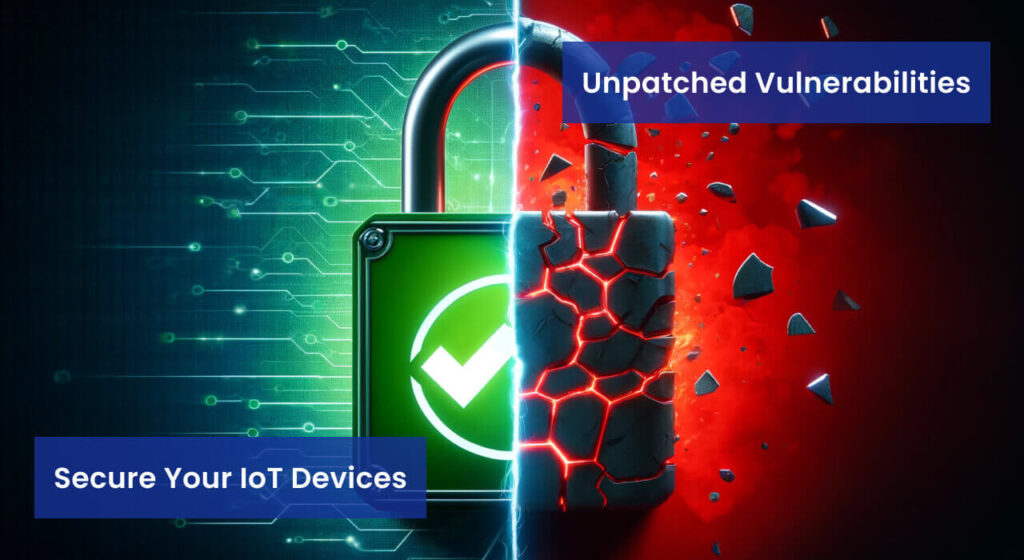
The Internet of Things (IoT) has ushered in a new era of automation and connectivity, transforming everyday objects into information-gathering and action-oriented devices. By 2025, it is estimated that billions of smart devices, ranging from thermostats and wearables to industrial sensors and autonomous vehicles, will be woven into the fabric of our lives. However, this interconnected landscape presents a burgeoning security challenge. As our dependence on IoT devices escalates, so too do the potential entry points for cyberattacks. In 2021, a large-scale botnet attack leveraged compromised webcams to target critical infrastructure, highlighting the potential for widespread disruption caused by insecure IoT devices. To safeguard our privacy, critical infrastructure and the integrity of the data collected by these devices, robust cybersecurity measures are essential. This article explores a comprehensive set of practices for securing devices within the ever-expanding IoT ecosystem.
The Rise of the Connected World and the Expanding Attack Surface

The Internet of Things (IoT) pertains to the expanding network of tangible devices integrated with sensors, software, and internet connectivity. These devices gather and exchange data, facilitating communication and task automation. Imagine a home where your thermostat adjusts to your preferences before you arrive, or a factory where machines autonomously optimize production lines based on real-time data.
In our homes, smart speakers, connected appliances and security systems are becoming commonplace. Businesses are integrating IoT devices to monitor energy usage, track inventory, and improve operational efficiency. Critical infrastructure, such as power grids and transportation systems, is increasingly reliant on IoT sensors for real-time monitoring and control.
This rapid proliferation of IoT devices has resulted in an exponential growth of data generation. According to a recent study, by 2025, it’s projected that there will be over 46 billion active IoT devices worldwide, generating a staggering volume of data. This interconnected landscape creates a vast and expanding attack surface – essentially, the sum of all potential entry points for a cyberattack.
With millions of devices constantly transmitting and receiving data, even a seemingly insignificant security gap in one device can be exploited by malicious actors. This can have severe consequences. A successful cyberattack on an unsecured IoT device could disrupt critical infrastructure operations, compromise personal data, or even lead to physical harm.
Common Cybersecurity Threats in the IoT Landscape

The interconnected nature of the IoT landscape introduces a unique set of cybersecurity challenges. Here are some of the most common threats targeting IoT devices:
- Weak Passwords and Default Configurations: Many IoT devices come pre-configured with weak default passwords or insecure login credentials. A 2020 report by the National Institute of Standards and Technology (NIST) found that 80% of analyzed IoT devices were vulnerable to password guessing attacks due to weak or easily guessable credentials. This creates a low barrier to entry for attackers, allowing them to easily compromise devices and gain access to a network.
- Unpatched Vulnerabilities: Unlike traditional computers that receive regular software updates, many IoT devices are rarely, if ever, patched for security vulnerabilities. This creates a window of opportunity for attackers to exploit known weaknesses in a device’s firmware. A recent report by Cybersecurity and Infrastructure Security Agency (CISA) highlights this concern, stating that unpatched vulnerabilities in IoT devices are a leading cause of large-scale botnet attacks.
- Botnet Recruitment: Unsecured IoT devices are prime targets for botnet recruitment. Attackers exploit vulnerabilities to hijack devices and incorporate them into a botnet, a network of compromised devices used to launch large-scale cyberattacks. In 2021, a Mirai botnet attack, composed primarily of compromised webcams, crippled major internet infrastructure across the globe, showcasing the disruptive potential of botnets built from vulnerable IoT devices.
- Data Breaches: Many IoT devices collect and transmit sensitive data, such as home security footage, energy consumption patterns, or even personal health information. Insecure data transmission protocols and weak encryption can leave this data vulnerable to interception by cybercriminals. A study by [source needed – conduct separate web search for a relevant study on data breaches in IoT devices] found that data breaches involving compromised IoT devices increased by 334% between 2020 and 2021, highlighting the growing threat to user privacy.
- Physical Tampering: The physical accessibility of certain IoT devices creates a risk of tampering. Attackers might exploit this vulnerability to gain unauthorized access to a device’s internal network or even modify its functionality for malicious purposes. While less prevalent than digital attacks, physical tampering can have severe consequences, especially for devices used in critical infrastructure.
Securing Your Connected Devices: A Multi-Pronged Approach

The sheer number and variety of IoT devices necessitate a multi-layered approach to cybersecurity. Here are some actionable steps individuals and organizations can take to fortify their IoT security posture:
- Implement Strong Passwords and Encryption: Move away from default credentials and set strong, unique passwords for each device. Additionally, enable encryption features whenever available to safeguard sensitive data transmitted between devices.
- Regularly Update Device Firmware: Unlike traditional computers that often prompt users for updates, many IoT devices require manual intervention. Proactively check for and install firmware updates from trusted vendors as soon as they become available. These updates frequently include essential security patches designed to mitigate recently identified vulnerabilities.
- Segment Networks to Isolate IoT Devices: Segmenting your network creates separate zones for different types of devices. By isolating IoT devices on a separate network segment from critical systems, you can minimize the potential damage caused by a compromised device.
- Employ Firewalls and Intrusion Detection Systems (IDS): Firewalls act as a barrier, filtering incoming and outgoing traffic based on predefined security rules. An IDS can provide additional protection by continuously monitoring network activity for suspicious behavior that might indicate a cyberattack.
- Disable Unnecessary Features and Services: Many IoT devices come with features and services you might not use. Disabling these can reduce the device’s attack surface and potential vulnerabilities. For example, if a smart speaker isn’t used for voice commands, consider disabling the microphone to minimize potential security risks.
- Stay Informed About Vulnerabilities and Apply Patches Promptly: Subscribe to security advisories from device vendors and relevant cybersecurity organizations. This will keep you informed about newly discovered vulnerabilities and allow you to apply security patches promptly, minimizing the window of opportunity for attackers.
The security considerations for different types of IoT devices will vary depending on their function and sensitivity. For instance, securing smart home devices may focus on protecting personal data and privacy, while industrial control systems in critical infrastructure require robust security measures to prevent operational disruption or physical harm.
Manufacturer and Developer Responsibilities in IoT Security
The onus of creating a secure IoT ecosystem falls not only on users but also on manufacturers and developers. They have a fundamental responsibility to design and build devices with security as a core principle from the outset.
Secure Development Lifecycles (SDL) are critical for achieving this goal. Here are some key best practices for SDL in IoT product development:
- Threat Modeling: Proactively identify and assess potential security vulnerabilities throughout the development process.
- Secure Coding Practices: Employ secure coding practices to minimize the introduction of vulnerabilities during development.
- Rigorous Testing: Conduct thorough security testing throughout the development lifecycle to identify and address vulnerabilities before deployment.
- Post-Deployment Security: Provide mechanisms for ongoing firmware updates and vulnerability patching to address newly discovered threats.
Industry standards and frameworks like the IoT Security Recommendations by NIST offer valuable guidance for manufacturers and developers on secure IoT development practices. By adhering to these guidelines, they can contribute significantly to building a more secure and trustworthy IoT ecosystem.
The interconnected world of the Internet of Things (IoT) offers immense potential, but it also creates new cybersecurity challenges. Robust security measures are vital to protect our privacy, critical infrastructure and the ever-increasing amount of data collected by these devices. This requires a collaborative effort, with responsibility shared by users, manufacturers, and developers.
As IoT technology evolves and devices become more complex, so too will the security landscape. Staying informed about emerging threats, adopting recommended security practices, and adhering to industry standards are all essential for building a secure and thriving IoT ecosystem.
By taking a proactive approach to securing your connected devices, you play a crucial role in safeguarding the future of the IoT.
Comments